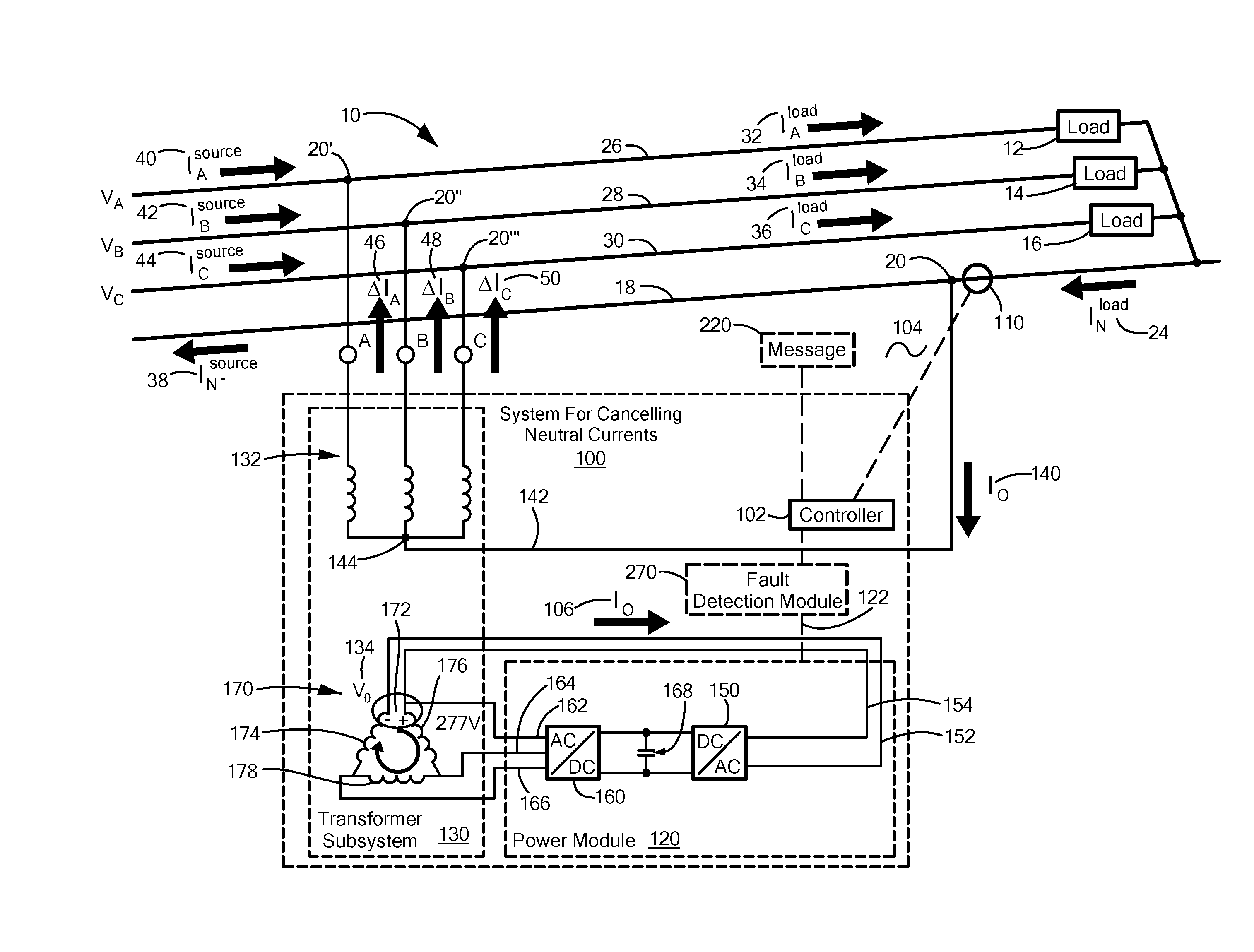System For Cancelling Fundamental Neutral Current On A Multi-Phase Power Distribution Grid
a power distribution grid and neutral current technology, applied in the direction of emergency protective circuit arrangement, electrical equipment, ac network to reduce harmonics/ripples, etc., can solve the problems of neutral conductor current flow, more difficult analysis of “unbalanced” system, and affecting the stability of the grid
- Summary
- Abstract
- Description
- Claims
- Application Information
AI Technical Summary
Benefits of technology
Problems solved by technology
Method used
Image
Examples
Embodiment Construction
[0027]Aside from the preferred embodiment or embodiments disclosed below, this invention is capable of other embodiments and of being practiced or being carried out in various ways. Thus, it is to be understood that the invention is not limited in its application to the details of construction and the arrangements of components set forth in the following description or illustrated in the drawings. If only one embodiment is described herein, the claims hereof are not to be limited to that embodiment. Moreover, the claims hereof are not to be read restrictively unless there is clear and convincing evidence manifesting a certain exclusion, restriction, or disclaimer.
[0028]As discussed in the Background section above, multi-phase power distribution grid 10, FIG. 1, in this example, a three-phase, four wire power distribution grid, may become unbalanced due to load connections, e.g., at loads 12, 14, and 16. In this example, the loads 12, 14 and 16 are all single-phase loads and connect ...
PUM
 Login to View More
Login to View More Abstract
Description
Claims
Application Information
 Login to View More
Login to View More - R&D
- Intellectual Property
- Life Sciences
- Materials
- Tech Scout
- Unparalleled Data Quality
- Higher Quality Content
- 60% Fewer Hallucinations
Browse by: Latest US Patents, China's latest patents, Technical Efficacy Thesaurus, Application Domain, Technology Topic, Popular Technical Reports.
© 2025 PatSnap. All rights reserved.Legal|Privacy policy|Modern Slavery Act Transparency Statement|Sitemap|About US| Contact US: help@patsnap.com



